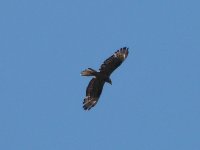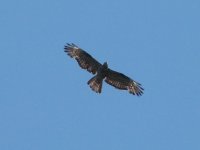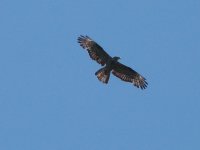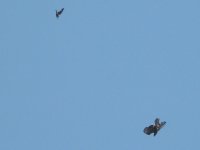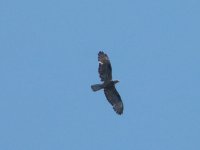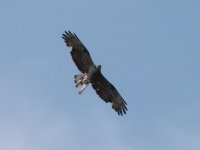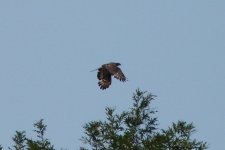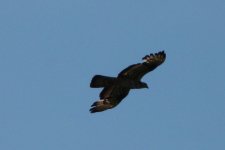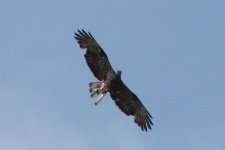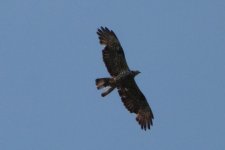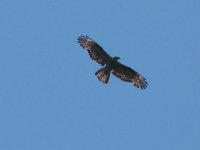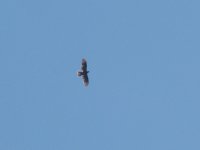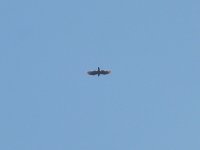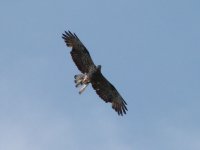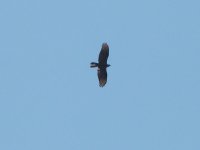Thank you very much, Tom and Brian, this has been very instructive, and the latest post on the HB blog shows clearly the fast re-growth of inner primaries and tail feathers on one male in particular. It's somewhat uncanny, that the latest post on the HB blog mentions just what I'm struggling with (it's happened several times). It's brilliant to also see that same male earlier in the season, before moult.
Yesterday late morning we heard distant calls of an HB; I found the caller very high, in the fierce glare of the sun nearing noon. It was circling incredibly slowly, at moments almost as if it was wind-hanging, and I even began to wonder if it was an STE (two had come by earlier in the morning). But it was clearly an HB, and not a male (usually even at great distances and in my poor photographs, a male's dark edges show up).
I then noticed another HB, overhead and not as high : the photos seem to show the bulky moulting female on this thread! distant images but clear enough to see her wings near perfect, a "swallow-tail" with more central tail feathers gone than in the photo from 29th July. On 6th August, I had seen her with a male over the distant eastern hills, she had a plump prey item that was visible between a hugely gapped tail.
I lost the bulky female overhead as she disappeared into the heat haze. The first Honey went on calling, a farewell to these valleys? - gradually moving SSE, towards the Apuan Alps. A couple of times in previous years, I've seen HBs late in the season gather in that direction, and I have wondered if it is the gateway to their migration route back to Africa.
Below are yesterday's two Honey buzzards (each with an earlier photo for comparison), might you be able to see if the first HB (which was the bird that was calling) is also a female? - in which case might there be the possibility that it is the slimmer female that Tom identified at the start of this thread? Only now with the inner primaries and the secondaries of her right wing nicely even (but innermost secondaries of each wing still missing). Are the lighter semi-transparent flight feathers the worn ones being kept for migration, while the darker opaque ones are the newly replaced feathers?
Female (?) 1 : pic 1 (1 Aug, as posted above); pix 2 & 3 (20 August)
Female 2 : pic 4 (29 July, as posted above); pic 5 (20 August)
p.s. for Brian, last week your HBs may have just been feeding discreetly, their season here may be later than usual this year (I am hoping!)




